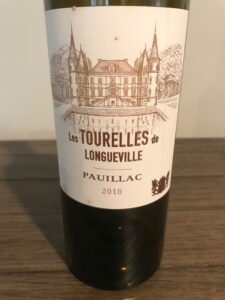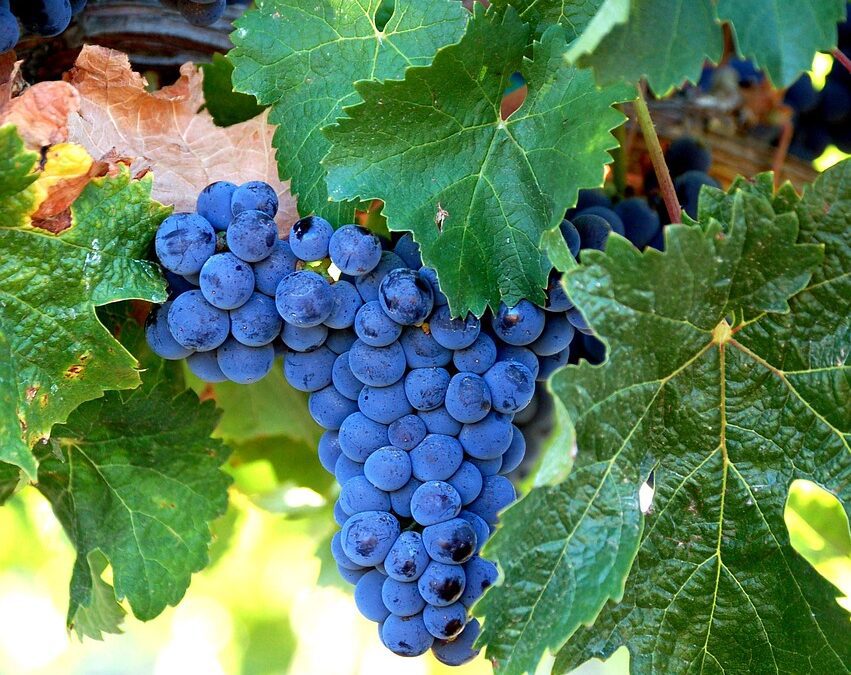By Bob Lipinski
“Drinking the right wine at the right time is an art.” (Horace A. Vachell, 1861-1955, English writer)
Some believe the name Merlot was given to this black grape variety because blackbirds (known in French as merle, or merlau in the local Occitan dialect in southern France) liked eating its plump, sweet-tasting flesh. Whether the story is factual cannot be determined, but what we know is the first mention of Merlot seems to be in the mid-1780s in the Libourne district of Bordeaux, France. According to DNA analysis conducted in the mid-1990s, it was determined that the parents of the Merlot grape are Cabernet Franc and the lesser-known Magdeleine Noire des Charentes grape from France.
Merlot is a medium acid red grape variety acknowledged worldwide as producing some of the finest dry red wines. It is the predominant red grape variety of Bordeaux and in other parts of France. It is also grown in most wine-producing countries. The grape has been grown in Italy since 1870, when it was first introduced in Trentino-Alto Adige.
Merlot produces wines from light-bodied and fruity to big, full-bodied wines of structure, tannin, and great longevity. The grape is used in many red wine blends, offering fruit, succulence, acidity, color, and overtones of jam and spices. When bottled as a separate varietal, its flavors can be subtle or dramatic, competing with some of the finest Cabernet Sauvignon wines. Two areas of the world where Merlot excels are the Pomerol district of Bordeaux and, surprisingly, in Washington State.
In the U.S., the Louis M. Martini Winery of Napa Valley, California, bottled the first “Merlot” as a separate varietal, blending the 1968 and 1970 wines from their Edge Hill Estate, that was released in 1971.
Depending on where it is grown, Merlot offers a wide spectrum of aromas and flavors. Merlot is generally bright ruby-red in color, producing scented, fruity wines, smelling and tasting of bell pepper, berries (blackberry, blueberry, cranberry, raspberry), black cherry, black currants, black tea, chocolate, licorice, maraschino cherry, and plum. It has hints of black and green olives, cedar, cinnamon, coffee, herbs, mint, and spices.
Although Merlot can be paired with a multitude of foods, I enjoy it with Beef Wellington, lasagna, a honey-glazed ham, braised short ribs, grilled eggplant, pecans, walnuts, and chestnuts; sweet potatoes, chimichurri sauce, and most of all, foods served with an abundance of bacon and pancetta.
Merlot has many synonyms and is also known as Bigney (France), Crabutet (France), Médoc Noir (Hungary), Merlau (France), Sémillon Rouge (France), Vitraille (France), and several other synonyms.
Below are several Merlot-dominated wines I recently sampled.
2019 Plumpjack “Merlot” Napa Valley, California. The bouquet is quite full, with notes of boysenberry and raspberry, along with black currants and mocha. This medium-bodied wine has flavors of plums and jam, with hints of sandalwood and nutmeg. A great mouthful of wine. I enjoyed it with grilled portobello mushrooms and eggplant with a hint of harissa paste.

2018 Les Tourelles de Longueville, Pauillac, France (a second wine of Château Pichon Baron). A blend of 66% Merlot, 20% Cabernet-Sauvignon, 8% Cabernet Franc, and 6% Petit Verdot grapes. Deep purple color with a full bouquet and taste of black currants, blackberries, jam, and spices. It is mouth-filling with hints of walnuts, dark chocolate, and plums. Serve with a dry rubbed steak, and a well done baked potato.

2018 Bogle Vineyards Merlot, California. (Aged 12 months in American oak.) Deep, ruby colored with aromas and flavors of cherries, brown baking spices, plums, and black raspberries. Smooth and very easy to drink with hints of vanilla and spices. Make it simple… a bacon, cheddar cheeseburger with steak fries.

Bob Lipinski is the author of 10 books, including “101: Everything You Need To Know About Whiskey” and “Italian Wine & Cheese Made Simple” (available on Amazon.com). He conducts training seminars on Wine, Spirits, and Food and is available for speaking engagements. He can be reached at www.boblipinski.com OR bkjm@hotmail.com


 Bob Lipinski, author of 10 books; writes, consults, and conducts training seminars on Wine, Spirits, and Food and is available for speaking engagements.
Bob Lipinski, author of 10 books; writes, consults, and conducts training seminars on Wine, Spirits, and Food and is available for speaking engagements.
Recent Comments